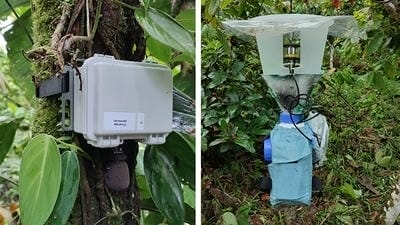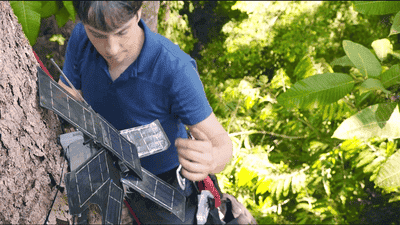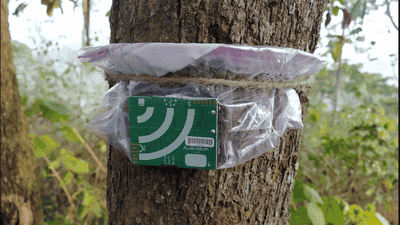
As the world faces a biodiversity crisis of unprecedented proportions, understanding the health of ecosystems is more crucial than ever. Many species are in decline, and ecosystems are under threat from climate change, habitat destruction, and pollution. Traditional methods of biodiversity monitoring often rely on visual surveys, which can be labor-intensive and limited by factors such as weather or time of day. An innovative approach gaining momentum is bioacoustics monitoring, which utilizes sound to assess biodiversity health. Coupled with advancements in artificial intelligence, this method offers a powerful tool for ecologists striving to understand and conserve our planet’s rich biodiversity.
Bioacoustics is the study of sound in biological contexts. It encompasses the sounds produced by animals as well as the sounds of their environments. This field has applications in ecology, behavior studies, and conservation, allowing researchers to gather valuable information about species presence, abundance, and interactions.
Bioacoustic monitoring involves recording and analyzing the sounds produced in natural environments. This technique provides several advantages:
Recording Devices: Various devices, including remote microphones and automated recorders, are used to capture environmental sounds. These devices are often set up in strategic locations within ecosystems, such as forest edges, wetlands, or nesting areas.
Sound Analysis Software: Once recorded, sound files can be analyzed using software that identifies and categorizes different vocalizations. This software can extract features from sound waves, such as frequency and amplitude, to distinguish between species.
Data Management Systems: Effective data management systems are essential for organizing, storing, and interpreting large volumes of acoustic data collected from various sites.

The integration of artificial intelligence (AI) into bioacoustic monitoring has revolutionized how researchers analyze sound data. AI algorithms can enhance the identification of species and assess biodiversity in several ways:
Machine Learning: AI systems employ machine learning techniques, which allow them to learn from data and improve accuracy over time. By training models on previously labeled audio data, AI can identify species vocalizations with remarkable precision.
Real-Time Analysis: AI-powered software can analyze sound recordings in real time, providing immediate insights into changes in biodiversity and ecosystem health. This capability allows researchers to respond swiftly to ecological changes or threats.
Handling Large Datasets: The vast volume of acoustic data collected from bioacoustic monitoring can be overwhelming. AI simplifies data processing and analysis, enabling researchers to efficiently manage and interpret large datasets.
Monitoring Bird Populations: In studies aimed at assessing bird populations in temperate forests, AI algorithms have been trained to recognize different bird calls. This technology enables researchers to monitor changes in avian biodiversity over time and identify migratory patterns.
Detecting Marine Life: AI is also used in marine environments to analyze underwater sound recordings. It can identify whale songs, fish vocalizations, and even the sounds of coral reef ecosystems, providing invaluable insights into aquatic biodiversity.
Community Engagement: AI-driven bioacoustic projects have engaged citizen scientists, allowing community members to contribute to data collection and monitoring efforts through smartphone apps designed for sound recording.
Bioacoustic monitoring is a valuable tool for assessing habitat health and quality. By analyzing the variety of sounds present in a habitat, researchers can gauge its ecological integrity.
Indicator Species: The presence of certain species, which have specific sound patterns, serves as indicators of habitat quality. For example, the calls of certain frogs may indicate a healthy wetland, while their decline may signal ecological stress.
Changes Over Time: Continuous monitoring can reveal shifts in species communities and help identify potential threats that require conservation interventions.
Bioacoustics can assess how human activities affect wildlife and their habitats:
Noise Pollution Studies: By analyzing the acoustic environment, researchers can understand how noise pollution from urbanization, traffic, and industrial activities impacts wildlife communication and behavior.
Monitoring Illegal Activities: In protected areas, bioacoustic monitoring can help detect illegal activities such as poaching or logging. Sudden changes in soundscapes may indicate human disturbances, prompting timely responses from conservation authorities.
Bioacoustic monitoring can help track how biodiversity responds to climate change, providing critical data on the resilience of ecosystems:
Phenological Changes: By listening to seasonal changes in species calls, researchers can study shifts in breeding patterns, migration timings, and other phenological changes in response to climate shifts.
Habitat Adaptation: Understanding how species adapt their vocalizations to changing environments can provide insights into their resilience and capacity to cope with climate impacts.
Bioacoustic monitoring is useful in assessing the success of habitat restoration initiatives:
Post-Restoration Monitoring: After restoration projects, tracking the acoustic community can reveal whether species are returning and thriving, helping evaluate the effectiveness of restoration efforts.
Adaptive Management: Continuous bioacoustic monitoring allows for adaptive management strategies, enabling conservationists to adjust efforts based on real-time data regarding ecological health.

Successful bioacoustic monitoring programs require careful planning:
Site Selection: Research teams should determine strategic locations for recording devices based on known habitats, species distributions, and specific conservation goals.
Recording Protocols: Developing comprehensive protocols for recording duration, frequency, and environmental conditions ensures consistency and data quality.
Collaboration among stakeholders enhances the impact of bioacoustic monitoring programs:
Local Communities: Engaging local communities fosters stewardship and encourages citizen scientists to participate in data collection and monitoring efforts.
Partnerships with Organizations: Collaborating with academic institutions, NGOs, and governmental agencies can facilitate knowledge sharing, resource pooling, and broader outreach.
Providing training for researchers, students, and community members is crucial:
Workshops: Organizing workshops on bioacoustics techniques, data analysis, and species identification can empower participants and promote capacity building.
Leveraging Technology: Training individuals on how to use AI tools for sound analysis ensures that programs benefit from the latest advancements in technology.
One of the key challenges in bioacoustics monitoring is environmental noise:
Ensuring data quality in bioacoustic monitoring is essential:
Calibration of Equipment: Regular calibration of recording devices is crucial to maintain high-quality recordings.
Data Interpretation: Analyzing and interpreting acoustic data can be complex. Collaboration with bioacousticians can help ensure proper data analysis and conclusions.
Bioacoustic monitoring can be resource-intensive:
Funding and Support: Securing funding for equipment, training, and personnel can be challenging. Grant writing, partnerships, and community fundraising are essential for sustainability.
Technical Expertise: The need for technical expertise in AI and sound analysis may require hiring specialists, which can strain limited budgets.

The future of bioacoustic monitoring will rely on continued technological advancements:
Improved Sensors: Developing advanced acoustic sensors that can capture a broader range of frequencies and sounds will enhance monitoring capabilities.
Integration with Other Technologies: Combining bioacoustic monitoring with other technologies such as satellite imagery and remote sensing can provide a comprehensive understanding of biodiversity and ecosystem health.
Establishing standardized protocols for bioacoustic monitoring will facilitate data comparability across studies:
Promoting education and awareness about the importance of bioacoustics is vital for fostering support for biodiversity monitoring efforts:
Public Programs: Developing educational programs that highlight the significance of sound in biodiversity can engage the public and cultivate a sense of responsibility toward conservation.
Citizen Science Projects: Encouraging citizen scientists to participate in bioacoustic monitoring promotes community engagement and enhances data collection efforts.
Bioacoustics monitoring represents a groundbreaking approach to assessing biodiversity health, leveraging the power of sound and artificial intelligence to provide invaluable insights into ecosystems. As fresh challenges emerge from climate change, habitat loss, and other anthropogenic pressures, innovative monitoring techniques like bioacoustics are essential for effective conservation and management strategies.
By listening to the sounds of the natural world, we can gain a deeper understanding of the intricate relationships between species, habitats, and ecological processes. Through collaboration, technological advancements, and ongoing education, bioacoustics monitoring can play a pivotal role in safeguarding our planet's rich biodiversity for generations to come.
As we embrace the potential of this exciting field, we must recognize our responsibility to protect the ecosystems we cherish, ensuring that the symphony of life continues to thrive across landscapes and waterways around the globe.